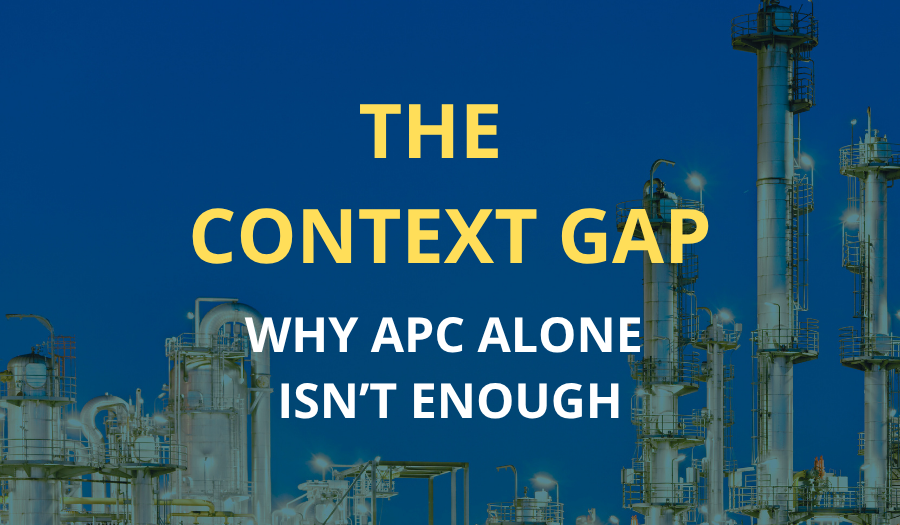
From Data Overload to Operational Insight
Why More Data Isn’t Helping Operators Decide Faster
Dashboards don’t decide — operators do.Turn signals into guidance they can act on.
The Data Deluge
When the plant is calm, dashboards feel helpful. But during an upset, the signal firehose outruns attention.
Trends climb, alarms stack, lab values trickle in, and the console becomes a window-to-window workout while the process keeps moving.
It’s not a lack of information that slows decisions — it’s too much of it. The result: slower reactions, defensive overrides, and margin quietly left on the table.
“More screens don’t make faster decisions — they make more switching.”
The Gap Dashboards Can’t Fill
Every tool has its place: historians, alarm systems, lab data, P&IDs, planning notes. Each adds detail — yet none tells the whole story in the moment.
- A chart shows what moved, not why it moved.
- An alarm shows symptoms, not the root cause.
- An optimizer computes the “best” move but may ignore a soft derate or tomorrow’s grade change.
The math can be right and still be wrong for the shift.
How Decisions Actually Happen in the Room
In the control room, decision-making is rarely linear. It starts with triage — what changed first, and what will it pull with it.
Then comes safety — how close we are to a true envelope, not a guardrail written months ago.
Then comes practice — what worked last time, which SOP applies, and what planning or maintenance just changed.
Only after all that does a move become credible.
Yet most dashboards scatter these pieces across screens, leaving the operator to stitch them together — while the clock keeps running.
When “More Data” Made It Harder
- A crude-unit upset sent operators through five windows and ten trends to figure out which constraint truly bound. By the time they pieced it together, the defensive move had already cost rate and energy.
- A single faulty sensor triggered a cascade of second-order alarms; the real issue was buried, the noise muted, and the controller dropped.
- A perfectly calculated “best move” was overridden — not because it was wrong, but because it was blind to maintenance timing.
More data didn’t help. More context would have.
What Good Looks Like — On One Screen
Operational insight isn’t a wall of numbers; it’s a short narrative surfaced in the moment:
- What changed
- Why it matters
- Whether it’s safe
- What to do next — and why
Imagine a single triage panel that:
- Highlights the few signals that truly moved (with direction and magnitude).
- Names the binding constraint and predicts the drift.
- Shows live distance to the true envelope.
- Proposes one recommended move with the expected impact.
- Links to the SOP line that supports the action.
That’s the difference between information and guidance — and between a move operators accept and one they override.
How You’ll Know It’s Working
When operational insight replaces data overload:
- Time-to-decision during upsets falls.
- Tool-switching across screens drops.
- Alarm storms calm because first causes are visible.
- APC usage rises — because recommendations come with reasons, margins, and timing.
Insight is data with context, consequence, and the next safe action.
The Road Ahead
Plants don’t need louder dashboards. They need systems that explain themselves.
The next step is turning that one-screen narrative into a habit — so that the why now, the safe margin, and the SOP link are always visible when it matters most.
In the next post, we’ll break down the black box — how explainable AI can show its work in operator language so guidance is trusted, kept online, and used — especially when the day isn’t calm.
Because the control room doesn’t need more screens.
It needs one clear reason to act, within the limits, right now.

